Article Italian specialist-acoustics, reproduced here with the blessing of the author in the original name Teoria e pratica del condotto'accordo di. I mean, literally - "Theory and practice of reflex". The title of this, in our opinion, consistent with the content of the article only formally. Indeed, it of the proportion of the simplest theoretical model of phase inverter and those surprises that prepares practice. But this is - if technically and superficially. And in fact, the article contains the answer to the questions that arise, judging by the editorial mail, often in the calculation and the manufacture of the subwoofer-bass reflex.
The first question: "If you calculate the phase inverter according to the formula, known for already a long time ago, will ready-to-phase inverter rated frequency?" Our Italian colleague, have eaten in my lifetime dogs a dozen commercials on the inverters, says: "No, not possible." And then explains why and what is the most valuable, how exactly will not work. The second question: "has Calculated the tunnel, and he was like long that does not fit anywhere. How can that be?" And here Signor offers so the original decision that this side of his work and we made in the title. So the key word in the new header should to understand not new Russian (otherwise we would have written: "short - range"), and quite literally. Geometrically. And now the floor has Mr. Matarazzo.
The bass-reflex: shorter!

Figure 1. Diagram of the Helmholtz resonator. Something from which everything happens.
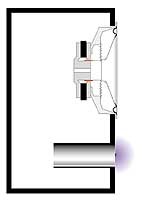
Figure 2. Classic bass reflex design. It is often not take into account the influence of the wall.
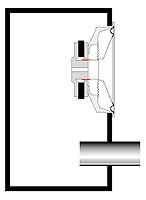
Figure 3. The bass reflex tunnel, the ends of which are the free space. Here the influence of the wall is not.
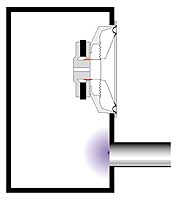
Figure 4. You can display the tunnel completely out. Here again will happen "virtual extension".
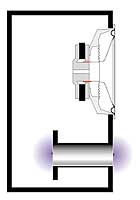
Figure 5. You can get a "virtual extension" on both ends the tunnel, if you make another flange.
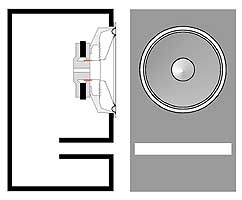
Figure 6. Slotted tunnel, located far from the walls of the box.

Figure 7. Slotted tunnel, located near the wall. As a result the influence of the walls of his "acoustic" length is longer geometric.
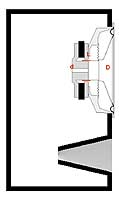
Figure 8. A tunnel in the shape of a truncated cone.
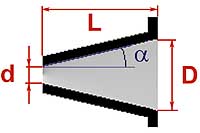
Figure 9. Basic dimensions of the conical tunnel.
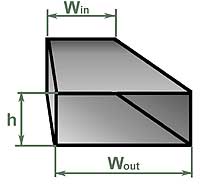
Figure 10. The dimensions of the slotted option conical tunnel.

Figure 11. Exponential tunnel.
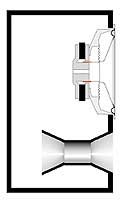
Figure 12. The tunnel in the shape of an hourglass.
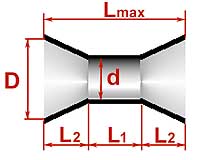
Figure 13. Basic dimensions of the tunnel in the shape of an hourglass.

Figure 14. Slotted variant of the hourglass.
Magic formula
One of the most common requests in e-mail of the author is to bring the "magic formula" by which the reader ACS could calculate the phase inverter. It is, in principle, it is not difficult. The phase inverter is one of the sales the device called "Helmholtz resonator". The formula the calculation is not that difficult most common and available models this cavity. An empty bottle of Coca-Cola (only be sure the bottle, not in cans) - such resonator, tuned to a frequency of 185 Hz, is checked. However, the Helmholtz resonator is much older than even this, gradually emerging from the use of the popular drink packaging. However, the classical scheme of the Helmholtz resonator is similar to the bottle (Fig. 1). In order for such a resonator has worked, it is important that he had the volume V and the tunnel cross-sectional area S and length L. Knowing this, the tuning frequency of the Helmholtz resonator (or bass reflex, that one and the same) can now be calculated by the formula:

where Fb is the frequency in Hz, C is the speed of sound, equal 344 m/s, S - area of the tunnel in square meters, L is the length of the tunnel in m, V is the volume of box in cubic meters  = 3,14, this by itself.
= 3,14, this by itself.
This formula is truly magical, in the sense that configuring the phase inverter does not depend on the parameters of the speaker, which will it installed. Volume of the box and the dimensions of the tunnel frequency settings determine once and for all. Everything seems to be done. Proceed. Suppose we have a box with a volume of 50 liters. We want turn it into a bass reflex enclosure with a setting of 50 Hz. Diameter tunnel decided to make 8 see By the above formula the tuning frequency of 50 Hz is obtained if the tunnel length will be equal to 12,05 see Accurately produce all the details collected by them in design, as in Fig. 2, and to test really measure the resulting resonant frequency of the port. And see to his surprise that she is not equal to 50 Hz, as supposed by the formula, 41 Hz. What is it and where we were wrong? Well, nowhere. Our newly-built the phase inverter would be tuned to a frequency close to that obtained for the Helmholtz equation, if it was made, as shown in Fig. 3. This case is closest to the ideal model, which describes formula: here, both the end of the tunnel "hang in the air, relative to far away from any obstacles. In our design, one of the ends tunnel interfaced with the wall of the box. For air vibrating in the tunnel, care, due to the influence of "flange" at the end of the tunnel it is like a virtual extension. The phase inverter will be configured as if the tunnel length was 18 cm and not 12, actually.
Note that the same thing will happen if the tunnel to put it outside of the box, again aligning one end with the wall (Fig. 4). There is empirical dependence "virtual extension" of the tunnel, depending on its size. For round tunnel, one slice which is located far enough away from the walls of the drawer (or other obstruction) and the other is the plane of the wall, the elongation is approximately equal to 0,85 D.
Now, if we substitute in the formula Helmholtz all constants to correct for "virtual extension", and all sizes be expressed in the usual units, the final formula for the length tunnel diameter D for configuring box of volume V at the frequency Fb, will look like this:

Here the frequency is in Hertz, volume in liters, and the length and diameter of the tunnel, in mm, as we are accustomed to.
The result is valuable not only because it allows at the stage of calculation to obtain the value of the length as close to the final, giving the desired value of the tuning frequency, but that opens certain reserves shortening of the tunnel. Nearly one we already diameter won. You can shorten the tunnel once more, keeping the same frequency settings, if done flanges on both ends, as shown in Fig. 5.
Now, it seems everything is taken into account, and, armed with this formula, we introduce himself omnipotent. And here we are expect difficulties.
The first difficulty
The first (and main) problem is the following: if a relatively small volume of the mailbox you want to configure on a rather low frequency, then, substituting in the formula for the length of the tunnel large diameter, and length we'll get more. Let's try to frame the diameter of the smaller - and everything works fine. The large diameter requires great length and small - small. What's the harm? And here is what. Moving the speaker cone of his back "pushing" is practically incompressible air through the tunnel bass reflex. Since the oscillating air is constant, then the air velocity in the tunnel will be so many times more oscillatory the speed of the diffuser, many times the cross-sectional area of the tunnel is less than the area of the diffuser. If you make a tunnel ten times smaller size than the diffuser, the flow rate will be large, and, when it reaches 25 - 27 meters per second, the inevitable emergence of turbulence and jet noise. The great Explorer acoustic systems R. small showed that the minimum cross-section of the tunnel depends on the diameter of the dynamics, the greatest progress of the diffuser and frequency the settings of the port. Small is offered entirely empirical, but it works flawlessly formula to calculate the minimum size tunnel:

The formula of its small brought in a familiar units, so speaker diameter Ds, the maximum speed of the diffuser and Xmax minimum tunnel diameter Dmin are expressed in inches. Frequency tuning bass reflex - as usual, in Hertz.
Now everything is not as rosy as before. Very it often turns out that, if the right to choose the diameter of the tunnel, he goes incredibly long. And if you reduce the diameter, appears the chance that the average power tunnel "whistle". In addition to actually jet noise, the small diameter tunnels have and a penchant for so-called "organ resonances, the frequency which is far above the frequency setting of the inverter and which excited in the tunnel turbulence at high speeds flow.
Faced with this dilemma, readers ACS usually I called the office and asked to suggest a solution to them. I have three of them: easy, medium and extreme.
A simple solution for small problems
When the estimated length of the tunnel is such that he almost fits in the housing and requires only slightly reduce its length with the same configuration and cross-sectional area, I recommend instead of round to use slotted tunnel, and post it not in the middle of the front wall of the case (as in Fig. 6), and in close one of the side walls (as in Fig. 7). Then at the end of the tunnel, inside the crate will be affected by the effect of "virtual lengthening" because of a nearby wall. Experiments show, that with constant cross-sectional area and the tuning frequency of the tunnel, it is shown in Fig. 7, is approximately 15% shorter than the design, as in Fig. 6. Slotted bass reflex, in principle, less prone to organ resonances than round, but to protect even more, I recommend to install inside the tunnel sound-absorbing elements in the form of narrow strips of felt glued on the inner surface of the tunnel near-thirds of its length. This is a simple solution. If not, go to average.
The average solution for problems more
A solution of intermediate complexity is the use of the tunnel in the form of a truncated cone, as in Fig. 8. My experiments with such tunnels have shown that it is possible to reduce the cross-sectional area of the inlet compared to the minimum a valid formula small without the risk of inkjet noise. In addition, the tapered tunnel is much less prone to organ resonances, rather than cylindrical.
In 1995 I wrote a program to calculate the conical the tunnels. It replaces the conical tunnel sequence cylindrical and by successive approximations calculates the length, needed to replace a conventional tunnel of constant cross section. This program is made for everyone, and we can get it on the website the journal ACS http://www.audiocarstereo.it/ in section ACS Software. Small program that runs under DOS, you can download and count yourself. And you can do anything else. When the preparation of the Russian version of this article, the calculation results in the program CONICO were tabulated, from which you can take a ready option. Table compiled for the tunnel diameter Is 80 mm. the value of the diameter fits most subwoofers in diameter the diffuser 250 mm. having Calculated according to the formula of the desired length of the tunnel, locate this value in the first column. For example, according to your calculations it turned out that the desired tunnel length of 400 mm, for example, to configure box with a volume of 30 liters at a frequency of 33 Hz. The project is non-trivial, and to place such a tunnel inside of the box will not be easy. Now look at the following three columns. There are presented designed program sizes are equivalent to a conical tunnel, length which will not be 400, and 250 mm is another matter. What do the sizes in the table shown in Fig. 9.
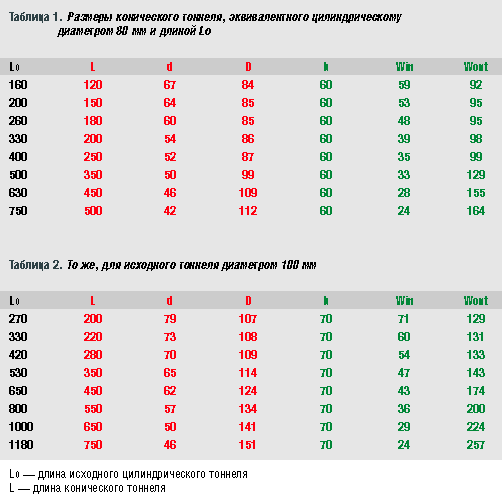
Table 2 compiled for the source of the tunnel with a diameter of 100 mm Is suitable for most subwoofers with a head diameter of 300 mm.
If you decide to use the program independently, remember: tunnel in the shape of a truncated cone is inclined at forming a 2 to 4 degrees. This angle is greater than 6 - 8 degrees not recommended, in this case, you may experience turbulence and jet noise at the input (narrow) end of the tunnel. However and with a small taper reducing the length of the tunnel is quite significant.
A tunnel in the shape of a truncated cone is not necessarily to be circular. As usual, cylindrical, it is sometimes easier to do in the form of a slit. Even as a rule, it is more convenient, because then he's going from flat parts. The dimensions of the slotted version tapered tunnel are given in the following columns of the table, and that these dimensions mean that shown in Fig. 10.
Replacement of conventional conical tunnel is able to solve many problems. But not everything. Sometimes the length of the tunnel turns out so great that shortening it even at 30 - 35% is not enough. For such severe cases of...
...extreme solution for big problems
An extreme solution is a tunnel with exponential contours, as shown in Fig. 11. Such tunnel the first cross-sectional area gradually decreases, and then the same increases smoothly to a maximum. From the point of view of compactness for given the tuning frequency of resistance to jet noise and organ the resonances exponential tunnel has no equal. But he's not is unmatched and complexity of manufacture, even if you calculate the contours on the same principle, as was done in the case tapered tunnel. In order exponential benefits the tunnel still could use in practice, I came up with its modification: a tunnel, which I called "the hourglass" (Fig. 12). Tunnel-hourglass consists of a cylindrical section and two conical, where the resemblance with the ancient device for measuring time. This geometry allows to shorten the tunnel compared to the source of constant cross section, at least one and a half times, and then and more. For the calculation of the hourglass, I also wrote the program, its you can find there on the ACS website. And as for conical tunnel, there is the table with the finished versions of the calculation.
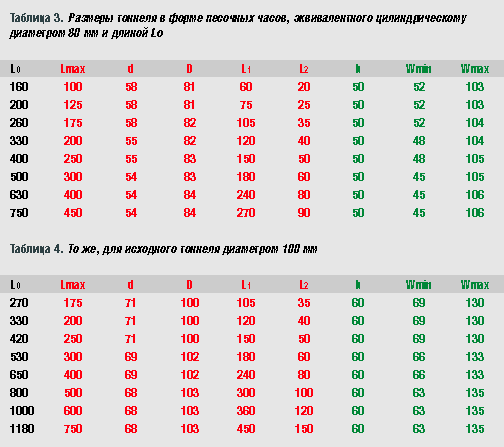
What do the sizes in tables 3 and 4, it will be clear from Fig. 13. D and D is the diameter of the cylindrical section and the greatest the diameter of the cone section, respectively, L1 and L2 be the lengths of the sections. Lmax is the total length of the tunnel in the shape of an hourglass appears just for comparison, how much shorter it was able to do, and generally, it is L1 + 2L2.
Technologically hourglass circular cross section do not always simple and convenient. So here execute it in the form of a shaped slits are obtained, as in Fig. 14. To replace the tunnel with a diameter of 80 mm, I recommend that the height of the slit choose equal to 50 mm, and for the replacement of 100 mm cylindrical tunnel is equal to 60 mm, Then the width of the section constant cross section Wmin and a maximum width at the inlet and outlet tunnel Wmax will be the same as in the table (the length of the sections L1 and L2 are as in the case of a circular cross section, nothing has changed here). If need, the height of the slotted tunnel h can be changed, at the same time adjusting and Wmin, Wmax, so that the area values of the transverse section (h.Wmin, h.Wmax) remained unchanged.
Variant with bass reflex tunnel in the shape of an hourglass I applied, for example, when doing a subwoofer for home theater with the tuning frequency of 17 Hz. The estimated length of the tunnel turned out to be more meters and calculating hourglass, I was able to reduce it by almost half, this noise was not even at a power of about 100 watts. Hope you this will also help...
About the author: Jean-Piero Matarazzo was born in 1953 in the town of Avellino, Italy. Since the early 70's working in the field professional acoustics. For many years he was responsible for testing acoustic systems for the magazine "Suono" ("Sound"). In the 90-ies has developed a number of new mathematical models of the process radiation of sound cones of the speakers and several projects acoustic systems for industry, including the popular in Italy the model of Opera. Since the late 90s actively collaborates with magazines "Audio Review", "Digital Video" and that is most important for us, "ACS" ("Audio Car Stereo"). In all three he is the main measurement parameters and testing of acoustics. What else?.. Married. Two little boys grow up, 7 old and 10.
Author: Jean-Piero Matarazzo. Translated from Italian by E. Gurtovoy; Publication: www.cxem.net






